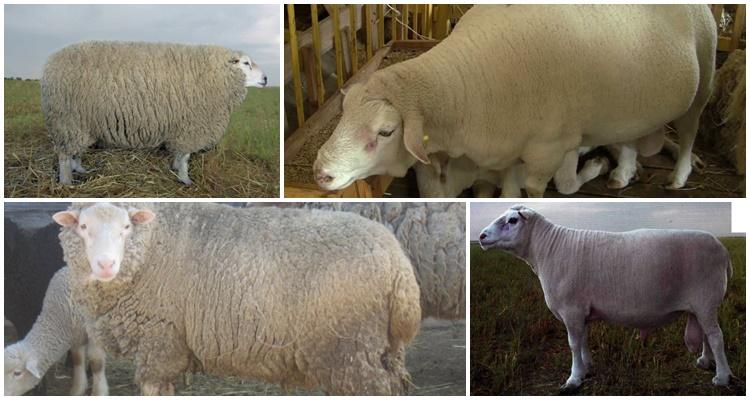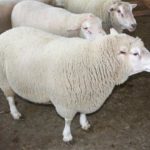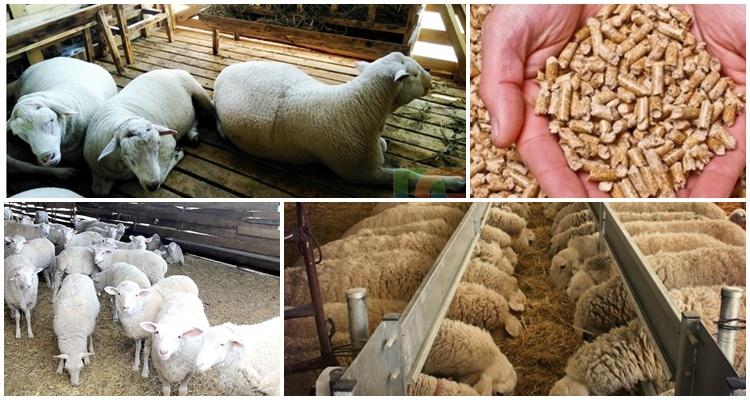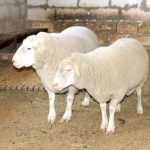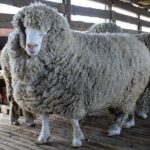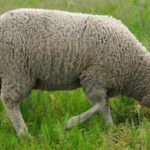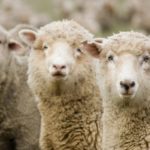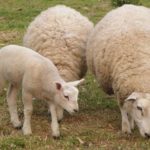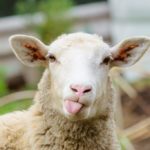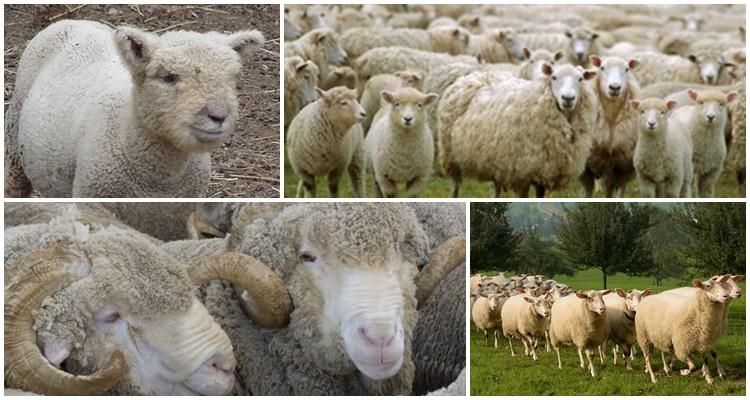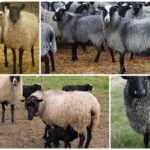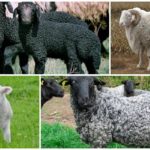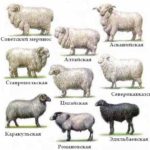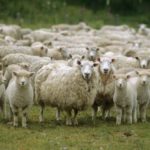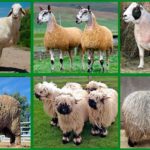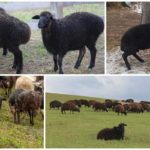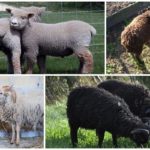The development of livestock farming and new economic requirements gave impetus to the transformation of some types of industry. The collapse of the Soviet Union, a sharp drop in demand in the wool market and the lack of domestic breeding species pushed farmers to form their own gene pool. The country's farms focused on expanding the meat sector and bred a new breed of sheep - the Tashlinsky.
Origin, history of the breed
Selection work began in the Stavropol Territory. The collective farm named after Voroshilov received breeding rams after the bankruptcy of its neighbors. After studying the characteristics of the breed, the best individuals were selected for crossing with Caucasian ewes. The progenitors of the new species were the East Frisians and Texels.
The females that showed the greatest weight gain were paired with breeding rams and then the process was repeated again. The meticulous selection of breeding material has not ceased for more than 7 years. And in 2008, the first sheep of the Tashlin breed were registered. The name comes from the river flowing next to the agricultural enterprise. Today, these animals are in demand in different regions of Russia.
Appearance and characteristics
Tashlin sheep are distinguished by their large build, powerful neck, and lack of horns. Animals are unpretentious in food and adapt well to climatic conditions. The meat tastes like marbled beef. This effect is achieved due to the presence of thin layers of fat among the muscle tissue.
Other indicators of the Tashlin breed:
| Options | Characteristics | |
| Weight | stud ram | up to 100 kg |
| ewe | up to 60 kg | |
| Weight gain | lambs | 220 g per day |
| Number of large curls per 1 cm | male | 3.13 pcs. |
| females | 3.08 pcs. | |
| Tensile load of wool | ram | 9.53 cN/tex |
| ewe | 8.28 cN/tex | |
| Fiber length | 12 cm | |
| Coat color | white | |
Lambs gain weight quickly. Carcasses of young animals at the age of 9 months contain only 20% bones, the rest is meat. Such indicators indicate the profitability of breeding animals of this species.
Advantages and disadvantages of Tashlin sheep
Hereditary characteristics make Tashlin sheep in demand in many regions of the country.
Farmers note that no significant deficiencies have been found in representatives of the Tashlin breed.
How to properly keep and care for animals
The most favorable climate for Tashlin sheep is considered to be one with moderate humidity. The breed adapts well to the conditions of Central Russia, the Stavropol Territory or the North Caucasus. Breeding livestock is also possible in cold regions if the sheep are kept in an insulated room.
This is required so that animals do not waste energy fighting frost. This will lead to weight loss.
In winter, bedding is prepared for the sheep, the depth of which provides natural heating from below. This mattress is left until it warms up. When cleaning the sheepfold, manure is removed and new portions of straw are added. The resulting layers are raked out only in the spring. Some farmers, instead of straw, use sawdust treated with a composition containing bacteria. This litter is dug up daily.
What should you feed them?
The main diet of Tashlin sheep consists of roughage.
Animal nutrition also includes:
- supplements with the necessary set of vitamins and other nutrients;
- concentrates;
- chalk and salt;
- juicy food
To ensure weight gain, concentrates are chosen. Their content in the diet makes up the majority. The amount of hay is also increased in the cold season. Tashlin sheep are not picky about food and gain muscle mass even on pasture.
Features of breeding
The Tashlin breed is still young.Crossbreeding of ewes with breeding Texels is still ongoing. Experienced livestock breeders recommend:
- For breeding, take lambs older than 4 months.
- When kept, older offspring are separated by gender. Inbreeding will result in weak individuals.
- The optimal time for the first mating of animals is when they reach the age of one or one and a half years.
Females have good fertility rates. Sheep bring up to 3 three lambs the second time. Animals produce enough milk to feed their offspring. The healthy drink contains about 5% protein, and the fat content reaches 8%. The young quickly gain weight.
Diseases, their prevention
Sheep diseases lead to decreased productivity and reduce weight gain. Particular attention is paid to the animal’s diet to eliminate digestive problems and the condition of the hooves. The appearance of a cough should alert you. These ailments are classified as non-communicable diseases.
The Tashlin breed is resistant to viruses, the animals have high immunity. But you shouldn’t forget about preventive measures. In the fall, premises are disinfected and limestone is added to wall paint. Cleanliness is maintained both in the pasture and in the sheep pens, and they also monitor the hygiene of the entire livestock. One sick individual will lead to infection of the entire herd.
In summer, flies and blood-sucking insects are dangerous for sheep. Therefore, in hot weather, animals are recommended to be groomed and bathed more often. The warm season is also fraught with rapid rotting of food, and the condition of the feed is carefully monitored. The main measure to prevent viral infections is vaccination.
Breeding prospects
Farmers consider the Tashlin breed to be economically profitable for breeding.It is important to remember that sheep are herd animals and become depressed when outside the flock. Therefore, they usually purchase at least two individuals. When purchasing females, they also take into account that after lambing the population will increase. It is better to provide a place for keeping adult ewes and lambs in advance.
Raising sheep is a simple process. If you have a ready-made pen for animals, the main expenses will go to purchasing feed. High-quality wool and tasty meat are in demand among consumers. Sheep milk is suitable for making gourmet cheeses. This direction of livestock development has recently gained great popularity. Therefore, the cost of maintaining a herd will quickly pay off. Even single farmers, and not just large farms, can open their own business.
Approximate cost and where to buy
Prices for sheep of the Tashlin breed are 110-170 rubles per kilogram of live weight. The cost is affected by the number of animals purchased. Most often, sheep are sold in batches of 100 to 300 individuals. When purchasing one or two heads, costs will increase almost 2 times per 1 kilogram.
Advertisements for the sale of sheep are posted on specialized websites. Internet services accumulate information from private farmers and livestock enterprises and provide a description of the livestock.
Livestock breeders evaluate the Tashlin breed as promising. Meat products and high-quality wool are in demand on the market, and the cheese-making business is gaining momentum. And their unpretentiousness and calm disposition make breeding and keeping sheep easy.

